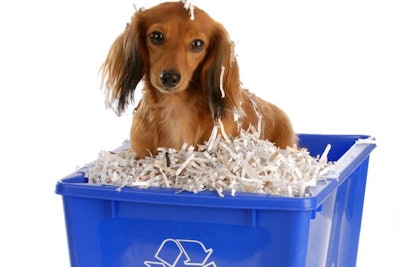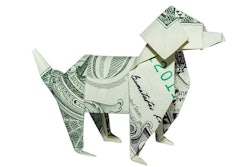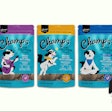
Sustainability has become both a buzzword and a necessity, both green-washed jargon and inevitable societal change. For the pet food industry, competing trends create contradictions that challenge the development of sustainable business models from ingredient sourcing and manufacturing to marketing, packaging and distribution. Nevertheless, dog, cat and other pet food professionals have found ways to translate the love for animals inherent in the industry to caring for the wider living world and its inhabitants.
In 1987, the United Nations Brundtland Commission defined sustainability as “meeting the needs of the present without compromising the ability of future generations to meet their own needs.” Sustainability has expanded to include a wide range of environmental, social and economic issues, many of which relate to the pet food industry. Environmental sustainability includes the effects of growing crops and livestock used as pet food ingredients. Agricultural systems affect the ecosystems around them, along with local economies. Maintaining functional environments ensures the long-term economic sustainability of the farms themselves. Farmers depend on rain and aquifers, soil microbes, pollinator insects and many other aspects of the natural world that can be disrupted by human activities. Those ecosystem services ensure the farms can continue employing people from surrounding communities while supporting the overall global economy. Those people growing, harvesting and processing foods deserve equitable pay for their work and safe working conditions, bringing social aspects of sustainability to the pet food system.
Social sustainability aspects of pet food
The contradictions to sustainability arise with conflicting consumer demands. For example, pet owners want muscle meat for their dog and cats, the same meats that people eat, while rejecting organ meats and rendered meat meals. Using large amounts of muscle meat in pet food places greater strain on farms, food prices and ecosystems. High-meat pet foods may raise prices in the butcher’s case while inflation already turns families’ steak nights to meatloaf. Even in the United States, federal statistics classify 10.5% of households as food insecure. On a societal level, this mean that pet owners feed human-grade meat to dogs while children remain malnourished a few blocks away. In many ways, the food system doesn’t meet the needs of present generations, so it fails the sustainability definition before even getting to the caveat about future generations.
Similarly, In 2015, the New York Times published the story of enslaved fishermen laboring on Thai fishing vessels that supplied both the human and pet food markets. This report led to class action lawsuits against Nestlé Purina, Mars Petcare and Big Heart Pet Brands (J.M. Smucker). Consumers increasingly scrutinize pet foods’ supply chains to make sure products’ ingredients do not imperil workers’ lives and liberty. To meet this challenge (and perhaps help themselves sleep at night), pet food professionals work to ensure that ingredient suppliers respect human rights. For example, Nestlé Purina PetCare has taken action to ensure the freedom and welfare of the people who catch the fish used in its dog and cat foods.
Environmental sustainability of pet foods
Along with social justice aspects of sustainability, human-grade meat in pet food also increases the resources needed to produce those diets. To produce a certain amount of protein from cows requires more land, water, feed and other resources, compared to other protein sources, such as plants or insects. Muscle meat makes up only a portion of that cow, so failing to use the whole animal wastes resources. If the guts and other parts most people don’t want also don’t go into pet food, then byproducts fall in value. Likewise, the food and water that cows turned into their hearts, lungs and kidneys gets wasted. Wasting resources now does little to ensure their presence for future generations.
Upcycling is a new word for something the pet food industry has done for a long time, using human food products that would have otherwise gone to waste. Upcycled pet food ingredients use existing materials, especially otherwise discarded foods like misshapen vegetables, to make a value-added item. Co-products, or by-products, have served as ingredients in pet food for decades. However, consumers don’t always think of these ingredients in terms of environmental and economic sustainability. Instead, pet owners may tend to think of by-products as inherently low-quality, in part because of marketing efforts by some pet food brands.
Pet food industry professionals need to start thinking and evaluating current supply chains and systems and allocating new resources to creating new ones, Alex Waite, co-founder of Shameless Pets, said during her presentation at Petfood Forum 2021. Shameless Pets uses unwanted fruits, vegetables and other ingredients to make upcycled dog treats.
“It's now time to start figuring out how we can start reframing consumer perceptions,” she said. “Thinking that co-products are not nutritious solutions for companion animal nutrition, it's not only inaccurate, but it ignores the opportunity to improve the sustainability of our food system, while adding value back into otherwise wasted ingredients.”
Once pet foods are produced, the products’ bags and other packages have their own environmental and economic dichotomies. Pet owners want packaging with low environmental impact. However, those same pet food and treat purchasers also look for artful, resealable or single-serve packaging that keeps contents fresh for long periods. Those two trends may conflict with each other. Premium and superpremium pet food packaging tends to be made from high-barrier materials with colorful, graphic printing. Making those types of pet food bags, pouches and other containers from renewable resources can pose problems, Scott Whiteside, food science professor at Clemson University, said during the Q&A of the Petfood Forum Connect-ED presentation. While scientists work on developing a suitable material, some pet food companies have moved toward reusable containers and refill systems. By reducing the amount of packaging used to transport and distribute kibble, a pet food bag refill system reduces packaging waste and fuel use. Earlier this year, Canidae rolled out dog food refill stations at pilot Petco retail outlets in Southern California. In 2019, Mars Petcare began offering products through the Loop system, which delivers pet foods in reusable containers directly to pet owners’ homes.
Along with technical challenges to recycling or landfilling, sustainable packaging tends to cost more, and to get easily recyclable packages will take costly research and development. While pet owners may be willing to absorb that cost, they may be skeptical of the sustainability claims overall. Earlier in 2022, France-based social community Yummypets survey pet owners in five countries, Debbie Phillips-Donaldson, editor-in-chief of Petfood Industry, reported. More than 60% of pet owners responded that they would be willing to pay more for a pet food product in more environmentally friendly packaging. However, 41.7% of respondents said they were skeptical of pet food companies’ sustainability claims, with only 29.6% believing them. In the United States, consumers have filed lawsuits over companies making allegedly dubious claims about packaging recyclability. However, a survey by C.O.nxt and Menu Matters found that consumers concerned about sustainability also tend to trust companies claims more.
Pet owner survey results suggest that younger generations may be the most concerned with environmental conservation, social justice, animal welfare and other aspects of sustainability. The economic viability of the pet food industry may depend on how well businesses can adapt to use only the resources they need, while minding what others need now and in perpetuity.

















